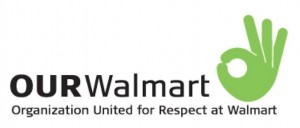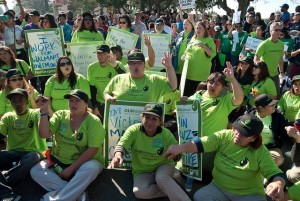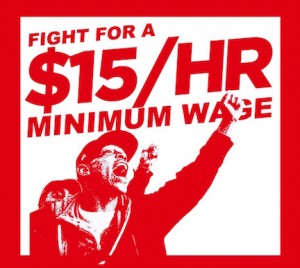A Cry for the Vanishing Value of Respect
The #1 contributor to job satisfaction in the workplace is “respectful treatment of all employees”, according to a Society of Human Resource Management (SHRM) 2015 report. Yet, report after report shows that the majority of employees in the U.S. are experiencing respectful treatment less and less.
It appears that the value of Respect is vanishing.
 This issue is supported by the findings of researchers Christine Porath and Christine Pearson, where they state in their 2013 Harvard Business Review article, “The Price of Incivility”, that 98% of workers have reported experiencing uncivil behavior. Half of those polled in the authors’ 2011 survey said they were being treated rudely at least once a week, which was twice as many as reported in 1998.
This issue is supported by the findings of researchers Christine Porath and Christine Pearson, where they state in their 2013 Harvard Business Review article, “The Price of Incivility”, that 98% of workers have reported experiencing uncivil behavior. Half of those polled in the authors’ 2011 survey said they were being treated rudely at least once a week, which was twice as many as reported in 1998.
In other words, a lack of respect – or incivility – has been steadily increasing over the years. Or put another way, respect is disappearing. This has had serious implications for business leaders.
As Porath and Pearson report, the impact is significant among workers who’ve been on the receiving end of incivility:
- 80% lost work time avoiding the offender.
- 66% said that their performance declined.
- 48% intentionally decreased their work effort.
- 38% intentionally decreased the quality of their work.
- 25% admitted to taking their frustration out on customers.
One might think that the solution to this growing challenge is straightforward: mandate everyone to treat others with respect. But it’s not that simple.
On the one hand, many individuals are unaware they are being rude or disrespectful. On the other hand, it’s a learned behavior. Porath and Pearson claim that a quarter of all managers who admitted to being uncivil attributed their behavior to their role models – their leaders – who still managed to climb the corporate ladder in spite of treating others badly (or possibly because of it).
The root of the problem lies with leaders, and we don’t have to look very far to find a very public example.
A Growing Problem at Walmart
 A lot has changed at Walmart since 1962 when Sam Walton first started the massively successful discount chain, when he declared three policy goals:
A lot has changed at Walmart since 1962 when Sam Walton first started the massively successful discount chain, when he declared three policy goals:
- Respect for the individual.
- Service to customers.
- Striving for excellence.
These goals were severely tested as the retailer grew in leaps and bounds. Since the year 2000, Wal-Mart Stores Inc. (Walmart) has been listed as either #1 or #2 on the Fortune 500. With sales fast approaching $500 billion (think about it… that’s almost half a trillion dollars!), their aggressive corporate strategy appears ruthless. Over the years, countless numbers of grassroots, anti-Walmart groups have sprung up to try and keep the retail giant out of their communities. The public perception is that Walmart can destroy a community when it moves in, wiping out local businesses with its competitively low prices.
Walmart clearly has no respect for competitors.
To counter this perception, Walmart boasts that it provides local jobs. But employees complain that respect from Walmart management is seriously lacking. In fact, the absence of respect became so evident that a large number of disgruntled employees came together to push for change inside the behemoth company.
It would seem that the policy of Respect for the individual died with Sam Walton, back in 1992.
OUR Walmart is on a Mission
 Twenty years after Walton’s death, thousands of employees banded together to create OUR Walmart, or “Organization United for Respect at Walmart”. The group’s name alone speaks volume about this growing issue.
Twenty years after Walton’s death, thousands of employees banded together to create OUR Walmart, or “Organization United for Respect at Walmart”. The group’s name alone speaks volume about this growing issue.
These are the folks responsible for holding protests at hundreds of Walmart stores on the busiest shopping day of the year for American retailers. And what were they demanding? Respect!
In November 2012, about 500 members of OUR Walmart participated in their first major protest at Walmart stores across the U.S., on the Friday after Thanksgiving, known as Black Friday. Joined by thousands of others who were sympathetic to the workers’ cause, the message to Walmart management was clear: employees want to be respected.
Their cause is articulated in the group’s mission and vision statements.
Mission: OUR Walmart works to ensure that every Associate, regardless of his or her title, age, race, or sex, is respected at Walmart. We join together to offer strength and support in addressing the challenges that arise in our stores and our company everyday.
Vision: We envision a future in which our company treats us, the Associates of Walmart, with respect and dignity. We envision a world where we succeed in our careers, our company succeeds in business, our customers receive great service and value, and Walmart and Associates share all of these goals.
When the largest non-governmental employer in the U.S., with over 2 million workers worldwide, has employees crying out for respect, something is clearly wrong. It’s reminiscent of the industrial revolution and the mistreatment of workers, and the formation of labor unions.
A New Opening for Unions
 It’s not surprising that OUR Walmart was initiated and supported by the United Food and Commercial Workers (UFCW) Union, even though Walmart employees had not joined the union.
It’s not surprising that OUR Walmart was initiated and supported by the United Food and Commercial Workers (UFCW) Union, even though Walmart employees had not joined the union.
For many years, the UFCW had tried and failed to unionize Walmart associates. To advance the union’s agenda, the UFCW president, Joseph Hansen, in 2005 started the labor-community coalition Making Change at Walmart. In 2010 UFCW hired veteran labor leader, Dan Schlademan, to become the director of this labor-community coalition. Schlademan then engaged ASGK Public Strategies, a media and branding firm, to identify the issues that really mattered to Walmart workers.
Not surprisingly, they stumbled upon the growing business problem of a lack of respect. They found their hook.
The strategy for OUR Walmart focuses on dedicated Walmart employees who share a few common complaints. The primary issue is managers not treating employees with respect. The secondary issue is about wages.
ASGK helped name the movement and craft a logo. Key employees at Walmart – some having worked there 10 and 20+ years – were sought out to help lead the movement. The union provided training on how to lead protests, teaching members what they could and couldn’t do.
A March on Walmart HQ
 In June 2011, about 100 members of OUR Walmart traveled to Walmart’s headquarters, in Bentonville, Arkansas, at the UFCW’s expense. In the parking lot, wearing their green OUR Walmart shirts, the group leaders presented a 12-point declaration to Karen Casey, the Walmart senior vice president for global labor relations.
In June 2011, about 100 members of OUR Walmart traveled to Walmart’s headquarters, in Bentonville, Arkansas, at the UFCW’s expense. In the parking lot, wearing their green OUR Walmart shirts, the group leaders presented a 12-point declaration to Karen Casey, the Walmart senior vice president for global labor relations.
What exactly were they asking for?
Their requests included:
- Dependable schedules.
- Expanded health-care coverage.
- The freedom to speak up without facing retaliation.
- Wages and benefits that ensured no associate would have to rely on government assistance.
Even though the group was clearly heard, no significant changes were implemented by Walmart management.
A year later, in June 2012, members of OUR Walmart returned to Bentonville, at the annual shareholders meeting, which happened to coincide with Walmart’s 50th anniversary. The group proposed a shareholder resolution calling for greater disclosure about incentive pay for executives. In front of about 16,000 people, Proposal 6 was read aloud:
“We have cut costs too far, stores are understaffed and associates cannot provide customers the service that Sam Walton built the company on and that we are proud to provide.?… Sam Walton said, ‘Listen to your associates, they are your best idea generators.’… There has to be a new relationship based on honesty, based on trust, based on respect.”
While this initiative was celebrated as a milestone for Walmart workers, the proposal only won about nine percent of the vote. It still didn’t appear that anything would change.
More money. But what about Respect?
 In November 2012, dozens of New York fast food workers walked off the job, demanded higher pay. This was a key trigger that ignited a ground swell amongst workers across America to raise minimum wage to $15 an hour, more than double the existing rate of $7.25 an hour.
In November 2012, dozens of New York fast food workers walked off the job, demanded higher pay. This was a key trigger that ignited a ground swell amongst workers across America to raise minimum wage to $15 an hour, more than double the existing rate of $7.25 an hour.
Throughout 2013, 2014, and 2015, workers – and unions – kept up the pressure on both business and government leaders. And these efforts appear to have paid off. By the end of 2015, more than a dozen cities and states had signaled their intent to raise the minimum wage to $15 an hour over the coming years.
So it wasn’t a huge surprise when Walmart announced in early 2015 its intent to increase wages for half a million of its employees. The retail giant announced that all of its workers in the United States would earn at least $9 an hour by April 2015, with additional increases to follow. In January 2016, Walmart then announced that more than a million of its U.S. workers would be receiving a pay increase, with all employees (excluding entry-level associates) to receive $10 an hour.
While the fight for $15 an hour continues, Walmart appears to be addressing at least the wage issue. But what about the request for respect?
The cry for respect is not isolated to just Walmart. As study after study confirms, incivility is increasing and the respectful treatment of employees seems to be relegated to the dark ages.
More money will not solve this problem. If business leaders want to fix the real issues, they need to bring back the vanishing value of respect.
Respect means an attitude of admiration or esteem; courteous regard for others; deference.
———————-
This article highlights the growing concern about the loss of Respect in the workplace, one of the 17 Common Values.
Is your organization fostering more respectful treatment of employees? If so, how?









